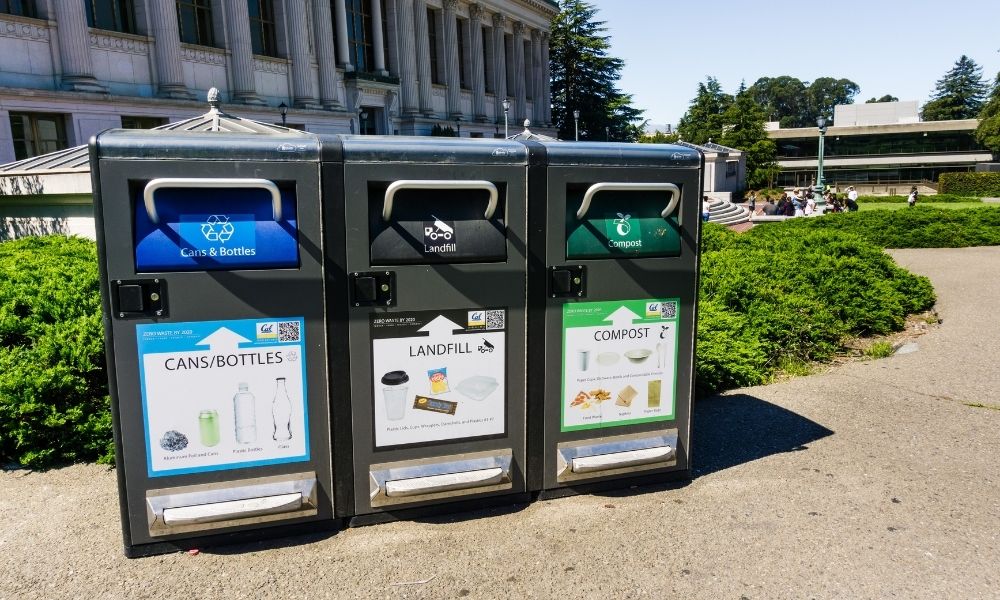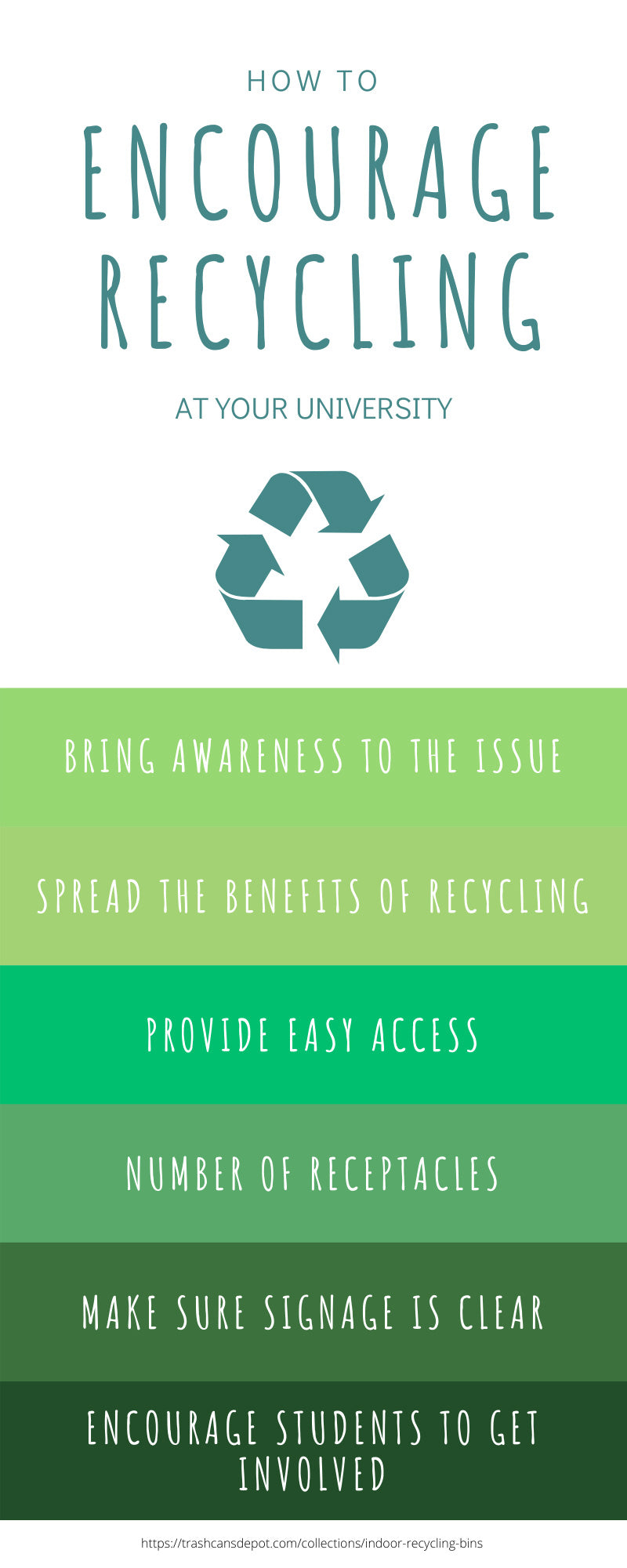
Trying to promote recycling on such a grand scale as the university level is a noble effort to help increase sustainability. However, because it is on such a large scale, you may not know where to start when it comes to your recycling program. From the starting point to reaching out to your students, here are a few steps on how to encourage recycling at your university. Take the process one step at a time, and you will notice the changes that you wish to see.
Bring Awareness to the Issue
Recycling is an important and responsible task for any large organization to take part in. Because of the amount of waste created somewhere as large as a university, it is crucial that anything not getting recycled isn’t lumped in with the trash. This not only promotes sustainability and a greener footprint, but it can also save your organization money in waste management. But before making any changes, you need first to educate your community.
Spread the Benefits of Recycling
We all likely learned about it as kids, but there is so much more that you can teach your students than just the concept of reduce, reuse, and recycle. Maybe, rather than thinking of how recycling impacts the whole environment, knowing how these efforts can benefit the community will resonate more with people. Recycling can create jobs, conserve energy, and protect wildlife, which will resonate with others. Helping people understand the problem and promoting a healthy community and future is the first step to promoting change.
Provide Easy Access
One of the biggest reasons your students and faculty may deter from recycling is a lack of convenient receptacle access. Most folks are less likely to hold onto their recyclables and dispose of them properly than simply throwing them away when it is convenient. There are a couple of things to consider regarding placement and type of trash versus recycling receptacles and how they can encourage good practices.
Number of Receptacles
Ideally, you would want to place a recycling receptacle next to every garbage bin on your campus. This makes recycling just as easy as throwing trash away, and it discourages placing recyclable items in the wrong destination. Although, you may already have a lack of trash cans across your campus. If you often receive complaints from students, faculty, or employees of finding litter around campus, this is a sure sign that you probably need more trash and recycling bins.
For example, some key areas to consider adding more trash and recycling units include:
- Building Entrances & Exits
- Near Food Courts, Cafes, Etc.
- Dumpsters Outside of Dormitories
- High-Traffic Areas (such as the University Center)
- Outdoor Parks & Seating
- Commons Areas
- Sports Stadiums & Fields
Any areas around your campus that see large groups of students, faculty, and visitors per day should have several garbage and recycling stations. And consider including more than the standard trash and recycling containers. There are various outdoor and indoor recycling containers to choose from for your campus grounds, including varieties for paper, glass, metal, and even composting. Just make sure that these varieties are clearly labeled.
Make Sure Signage Is Clear
Another way to increase the likelihood of your campus members recycling is to mark and label your receptacles clearly. Make sure that different bins, such as paper versus plastic recycling, are labeled clearly and correctly; otherwise, students may give up and throw everything in the trash anyway. You should easily distinguish recycling categories from garbage bins at first glance so that students and faculty in a hurry don’t find it a waste of time to sort their trash. This also helps keep the proper types of recycling and garbage in their respective homes and not mixed, which can cause issues with hauling and trash pickups. The different breakdowns that you may want to feature in bins include:
- Paper
- Plastic
- Metal
- Glass
- Compost
Clearly label or color-coordinate these different categories to avoid confusion. You could also feature stations around campus to collect items that people may wrongly throw away—things like batteries, electronics, plastic bags, clothing, light bulbs, and more. Some programs collect these types of items for proper disposal or reuse.
Encourage Students To Get Involved
Individual students may not think that they can make much of a difference by themselves. It’s important to encourage student-run organizations and events to connect so that they can better see the impact they have on the environment together. Some great ways to get your campus population involved in the recycling efforts include:
- Environmental Clubs: The odds are that your university’s student body may already have an environmental club. But if not, putting together a group in a club setting is a great way for students to connect under a shared cause. From there, this group can also find creative ways to promote recycling on campus.
- Events: Either your campus administration or smaller groups such as clubs can hold sustainability and recycling-driven events on campus. Events can consist of recycling drives, community service, and other sustainable activities.
- Set Goals: Involve your community by setting short or long-term recycling goals that you want to meet as a campus. Individual dorms, academic buildings, libraries, and commons centers can hold competitions to see which can collect the most materials. Whether large or small-scale goals, do whatever you think will inspire your community the most.
It may seem like an impossible task to promote recycling on a campus-wide scale, but it can help to take these tips on how to encourage recycling at your university one step at a time. Because recycling is an individual effort at its core, it helps to start small and work up to that more significant scale. If you educate your community and provide them with the proper resources, that alone is all you need to get started. From there, you will start to see the change for good in your community and beyond.


